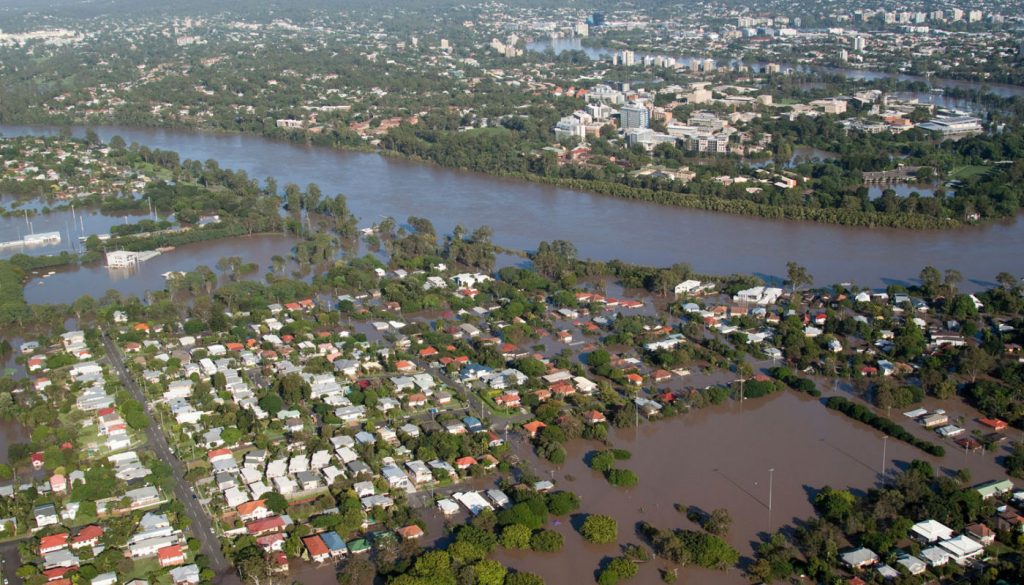Almost seven years after the devastating Queensland floods, proceedings have begun on a class action lawsuit filed by more than 6000 flood victims against Wivenhoe dam engineers and operators.
The case hinges on whether or not engineers breached the Wivenhoe Dam manual and acted negligently by ignoring rainfall predictions before major releases became necessary in mid-January 2011.
The 2011 Queensland Floods devastated parts of the state and caused hundreds of millions in damages. The questions at hand is: Could this all have been prevented? Prosecuting attorneys have stated that dam engineers disregarded the Wivenhoe Dam operating manual, and delayed releasing water in an effort to keep rural bridges open and avoid urban flooding.
However, according to the defendants, it’s not as cut-and-dry as that. Engineers need to consider a number of factors in these types of situations, including the consequences of unnecessary water releases. In this case, there was some precedent for not releasing water.
One dam engineer said he raised the risk of unnecessary water releases in an email in early December 2010, as there was never certainty about the expected amount of rainfall. He cited an earlier incident from November 2010, where similar predictions of 25 to 50 ml of rainfall spurred a water release from the dam. However, only 10 ml of rain actually fell.
At the time parts of Queensland were still dealing with drought conditions, and an unnecessary release of water could have caused backlash by those concerned about water security.
“Pre-release of anticipated floodwater based on forecast could result in major embarrassment,” his email read.
But according to the plaintiffs, that’s no excuse.
“Major embarrassment is not one of the objectives in the flood manual, nor is concern about media reporting or public relations,” said Julian Sexton SC, barrister on behalf of the plaintiffs.
“Waiting for certainty is not the language of reasonable care, which focuses on probabilities, even possibilities, not on being certain that harm will occur before taking reasonable precautions.”
An Engineers Australia (EA) spokesperson stated that engineers did not ignore the rainfall forecasts, and questioned whether they are a key decision-making tool for dam engineers, saying there was good reasoning behind the engineers’ actions.
“Forecast rainfall might be useful in assisting the operation of the dam, but application of this information must consider the reliability of the forecasts, and the risk if forecasts prove to be incorrect,” the spokesperson said.
They cautioned against trivialising the complicated work of dam engineers by “reducing their role to a simplistic checklist approach”.
“From the reports that we have seen, the engineers used professional judgement in a complex and rapidly changing environment to achieve the best outcomes,” said the spokesperson.
“Flood operation is a multifaceted task that requires specialised operators who must use their expert technical judgment. The flood operation manuals provide guidance on operating the dam under conditions that can be reasonably foreshadowed.
“For professional engineers, the question is what process did they use to inform their decision-making and were their conclusions reasonable, rather than simply blindly following a manual?”
The Queensland Floods Commission of Inquiry made no finding of negligence on the part of Seqwater, which operates the dam. The utility jumped to the defence of the dam engineers, and insisted they did they best they could given the extreme conditions.
“The Commission’s own expert concluded that, in the circumstances, our engineers had achieved close to the best possible mitigation result,” Seqwater said in a media statement.
The EA spokesperson added that ongoing efforts are required to protect Brisbane against future flood events. This includes better community engagement to disseminate flood information, town planning and emergency services.
“The community must recognise that much of Brisbane is in a floodplain and will flood again,” said the EA spokesperson.
“Our resilience needs to be further strengthened through improvements in the design of our homes and infrastructure to mitigate the impact from floods as much as possible.”
